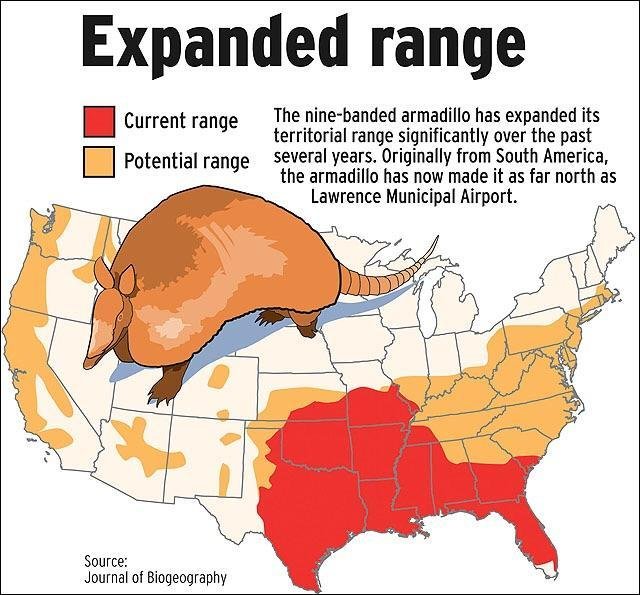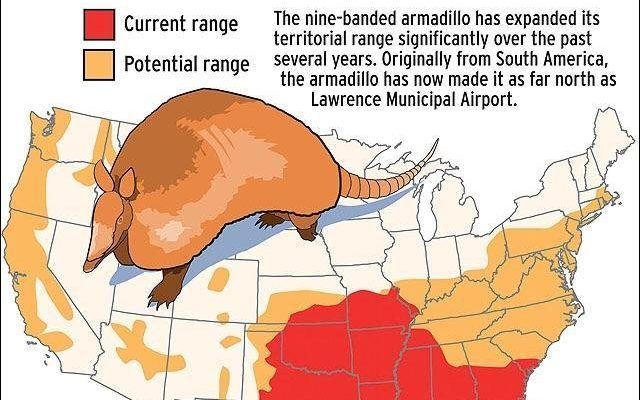
Just like a favorite pair of shoes, armadillos have their particular fit. Ranging from lush forests to dry grasslands, their habitats can vary greatly. Here’s the thing: learning about where armadillos live not only satisfies your curiosity but also helps us appreciate their role in ecosystems worldwide. So, grab a cup of coffee, and let’s explore the habitats and distribution of armadillos together.
Understanding Armadillo Habitats
Armadillos are primarily found in the Americas, with varying habitats depending on the species. You’ll find the nine-banded armadillo, the most common type, predominantly in the southern United States, stretching all the way down to Argentina. What’s interesting is that they prefer warm climates and often hang out in areas where the temperature rarely drops below freezing. Imagine them cozying up in a warm, dry burrow, waiting out the chill of winter.
Their habitats can be categorized into a few main types:
- Forest Areas: Armadillos enjoy both deciduous and tropical forests, often hiding under dense foliage.
- Grasslands: They thrive in open grasslands and prairies, where they can dig for insects and grubs.
- Scrubby Regions: Shrubby areas provide good cover and plenty of food sources for these little foragers.
Let me explain: armadillos are not picky eaters. They’ll dig through leaf litter or shuffle through the grass, looking for tasty treats like insects, earthworms, and even small reptiles. They play an important role in their ecosystems by controlling insect populations and aerating the soil with their burrowing habits.
Key Species and Their Preferences
When we talk about armadillos, we’re really discussing several species, each with its preferred habitat. The best-known among them is the nine-banded armadillo. This little guy is known to adapt well to urban areas, often seen foraging for food in gardens or parks. Isn’t it fun to think about how adaptable they are?
Other species, like the giant armadillo, have different habitat needs. Found mostly in South America, they prefer dense rainforests and are much less common to spot. Their habitats are less about urban sprawl and more about finding those hidden nooks in nature where they can thrive.
Then there’s the pink fairy armadillo, the smallest armadillo species, which prefers dry grasslands and scrubby areas in Argentina. Its habitat choices are unique and help it stay protected from predators.
Habitat Adaptations
One of the fascinating things about armadillos is how well they adapt to their environments. Think about it—if you lived in a place with lots of predators, wouldn’t you want to develop some clever ways to stay safe? Armadillos have evolved several features that make them well-suited to their habitats.
For starters, their hard shell acts like a shield against threats. When they feel threatened, they can roll into a ball or dig swiftly into the ground to hide. Their claws are specially adapted for digging, allowing them to burrow into soft soil effortlessly. This adaptability ensures they can find food and shelter regardless of their specific location.
You might be wondering how climate affects their habitat. Well, armadillos are warm-blooded animals, meaning they thrive in warmer climates. In colder regions, they can struggle. That’s why you won’t find them in the northern parts of the U.S. during winter. They’ll typically retreat to areas with milder weather, showing just how crucial climate is to their survival.
Geographical Distribution
Geography plays a big role in determining where armadillos live. The nine-banded armadillo, for example, is known for its expanding range in the U.S., moving northward into states like Texas, Oklahoma, and even parts of Kansas. Isn’t it amazing how animals can shift their homes in response to changes in climate and availability of food?
In contrast, other species are more limited in their distribution. The Southern three-banded armadillo, for instance, is found primarily in Brazil and Paraguay. Its distinct habitat preferences keep it within a more confined area, making it less adaptable compared to the nine-banded species.
Armadillos generally prefer regions that provide plenty of cover and access to food. For this reason, areas with mixed vegetation, such as transitional zones between forests and grasslands, offer them the best of both worlds.
Threats to Armadillo Habitats
Despite being quite resilient, armadillos face threats that affect their habitats. One significant challenge is urbanization. As more people move into their territories, armadillos often find themselves in conflict with human activities. Roads, buildings, and agriculture can disrupt their natural environments, leading to habitat loss.
Another concern is climate change, which can impact temperature and food availability. As the climate warms, their traditional habitats might become unsuitable, forcing them to adapt or move. This shift can also alter their prey availability, making it tougher for them to thrive.
It’s important to consider how habitat conservation plays a role in preserving armadillos. Efforts to maintain their environments help ensure that they can continue to thrive alongside human populations.
Conservation Efforts
Conservation initiatives are vital in protecting armadillo habitats. Many organizations are working hard to create safe zones where these creatures can live without the constant threat of human encroachment. For example, wildlife reserves and national parks provide a sanctuary for armadillos to thrive and reproduce.
Public awareness also plays a crucial role. By educating people about the importance of armadillos in their ecosystems, we can foster respect and understanding for these unique animals. After all, they serve important ecological functions, like controlling insect populations and promoting healthier soil.
One interesting initiative is the construction of wildlife corridors. These pathways allow animals to migrate safely between habitats, ensuring genetic diversity and healthier populations. Isn’t it incredible that small efforts can make a big difference in the survival of these fascinating creatures?
In Summary
Armadillos are remarkable animals with diverse habitats and geographical ranges. Understanding where they live helps us appreciate their unique adaptations and the challenges they face. As they navigate forests, grasslands, and even urban environments, these little armored creatures remind us of the delicate balance within ecosystems.
So, next time you think about armadillos, remember their homes are more than just shelter—they’re essential to their survival and our environment. By supporting conservation efforts and raising awareness, we can help ensure these fascinating creatures continue to roam our planet for generations to come.

